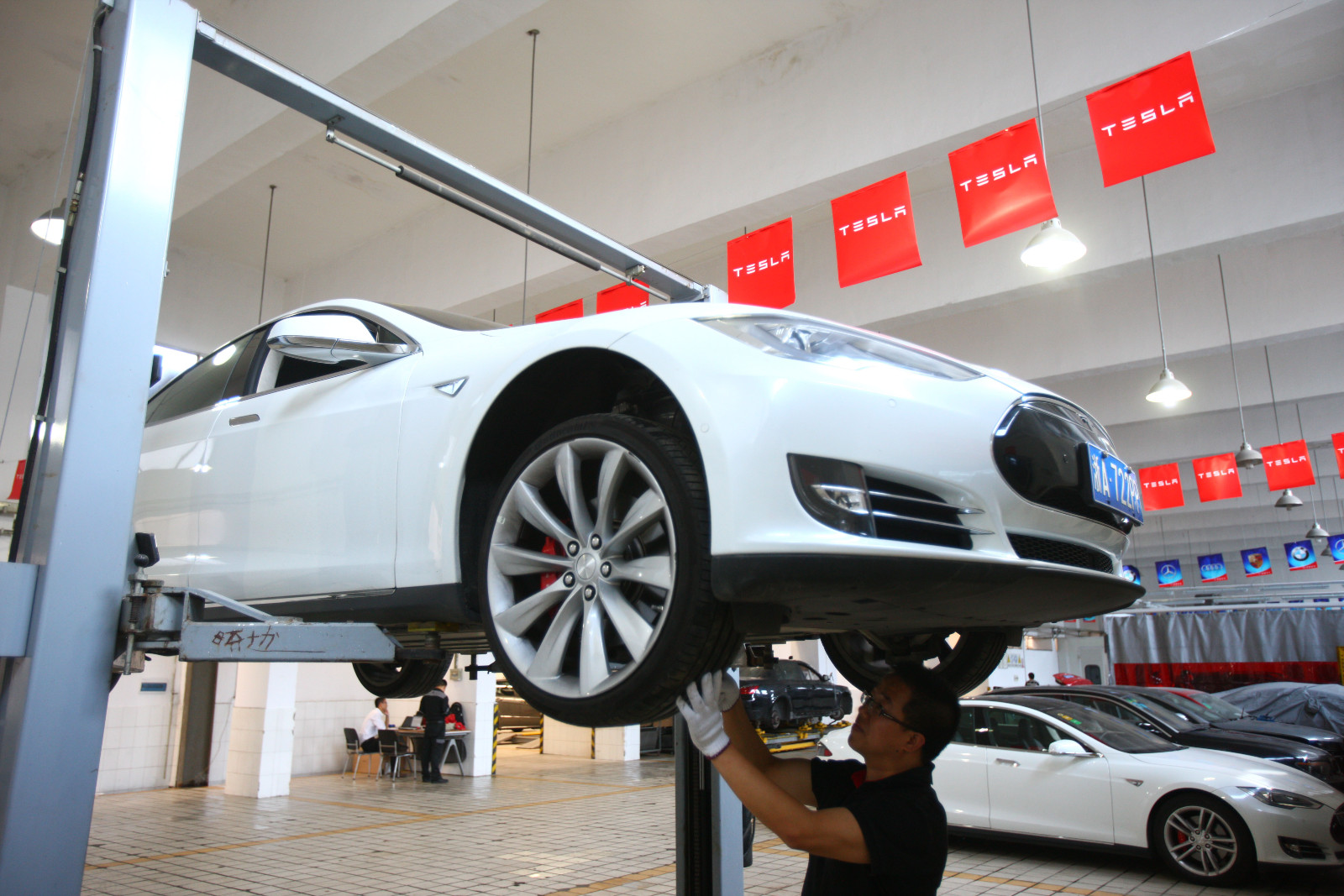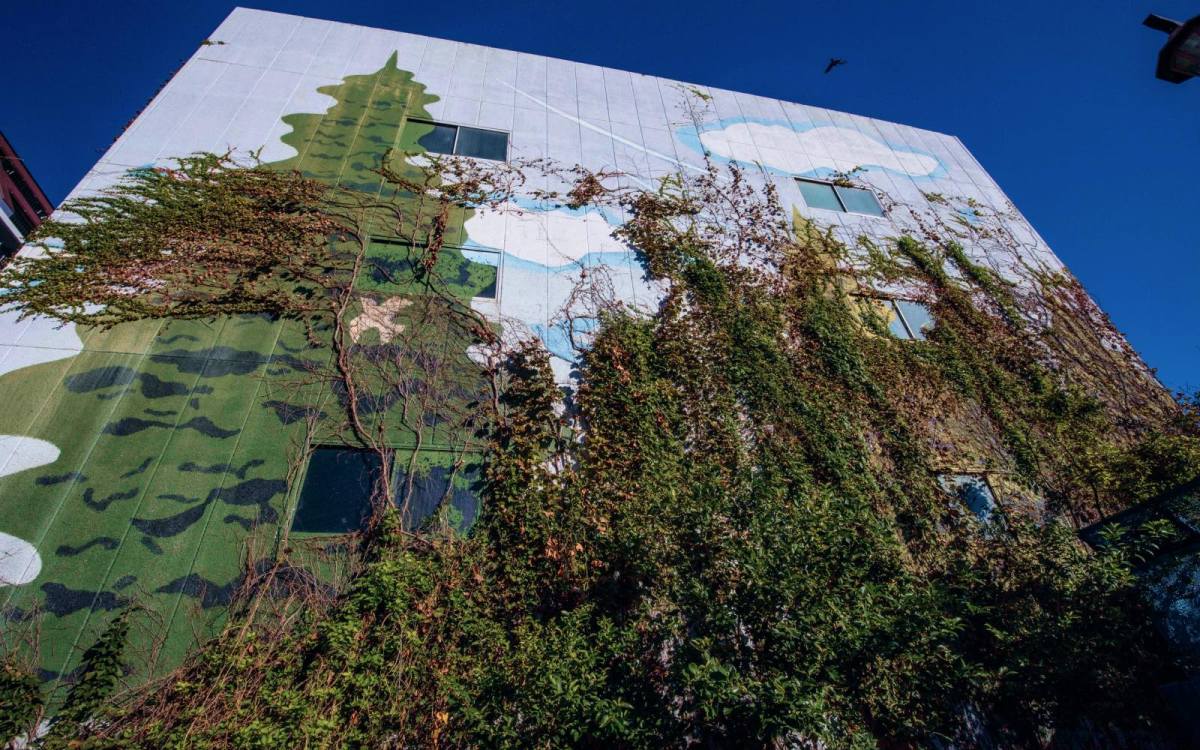
Leading American electric vehicle makers Tesla and Rivian are supporting a controversial pact between carmakers and automotive repair organizations that critics say is an attempt to undermine legislation that would make it easier for Americans to fix their cars.
For several years, the American car industry has been feuding with automotive service groups and right-to-repair advocates over who should control access to telematic data, information about speed, location, and performance that cars transmit wirelessly back to their manufacturers. Many in the automotive repair industry say this data is essential for fixing today’s computerized cars, and that it should be freely available to vehicle owners and independent shops. Increased access to telematic data, repair advocates argue, will drive down the cost of repair and keep vehicles on the roads for longer. This is particularly important for EVs, which must be used as long as possible to maximize their climate benefits and offset the environmental toll of manufacturing their metal-rich batteries.
These arguments have led members of Congress from both parties to introduce a bill called the REPAIR Act that would grant car owners, and the mechanics of their choosing, access to their telematic data. But the auto industry, which stands to make billions of dollars selling telematics to insurers, streaming radio services, and other third parties, contends that carmakers should be the gatekeepers of this data to avoid compromising vehicle safety.

In July, ahead of a congressional hearing on right-to-repair issues, an automotive industry trade group called the Alliance for Automotive Innovation announced it had struck a “landmark agreement” with repair groups regarding telematic data sharing — an agreement that ostensibly preempted the need for legislation. A few weeks later, Tesla and Rivian, neither of which is a member of the Alliance for Automotive Innovation, announced their support for the agreement. The only problem? Major national organizations representing the automotive aftermarket and repair industries weren’t consulted about the agreement, don’t support it, and claim it won’t make cars easier to fix.
The new agreement “was an attempt by the automakers to distort the facts of the issue and create noise and confusion in Congress,” Bill Hanvey, president of the Auto Care Association, a national trade association representing the aftermarket parts and services industry, told Grist. The Auto Care Association is among the groups that was not consulted about the agreement.
This isn’t the first time the auto industry and repair professionals have reached a voluntary agreement over right-to-repair.
In 2002, the Automotive Service Association, one of the signatories on the new agreement, struck a pact with vehicle manufacturers to provide independent repair shops access to diagnostic tools and service information. Then, shortly after Massachusetts passed the nation’s first right-to-repair law focused on vehicles in 2013, manufacturers and organizations representing the aftermarket, including the Auto Care Association, signed a memorandum of understanding, or MOU, nationalizing the requirements of the law. That law granted independent mechanics explicit access to vehicle diagnostic and repair information through an in-car port.
Gay Gordon-Byrne, executive director of the right-to-repair advocacy organization Repair.org, believes automakers signed the 2014 MOU “in order to prevent more legislation — and particularly more legislation that they would not like.” Automakers objected to including telematics in the 2014 MOU, according to Hanvey. “Because, at the time, the technology was so future-looking, the aftermarket agreed to get a deal in place,” he said.
Telematics is no longer technology of the future, however. Today, manufacturers use telematic systems to collect reams of real-time data related to a vehicle’s activity and state of health, potentially allowing manufacturers to evaluate cars continuously and encourage drivers to get service from their dealers when needed. Independent mechanics, meanwhile, need drivers to bring their vehicles into the shop in order to read data off the car itself — if the data is accessible at all.
In 2020, Massachusetts voters passed a ballot measure called the Data Access Law requiring carmakers to make telematic repair data available to owners and mechanics of their choosing via a standard, open-access platform. Shortly after voters approved it, Alliance for Automotive Innovation sued Massachusetts to stop the law from going into effect, arguing that it conflicted with federal safety standards. The federal judge overseeing the lawsuit has delayed ruling multiple times, keeping the requirements in legal limbo for nearly three years. In June, Massachusetts Attorney General Andrea Campbell decided to begin enforcing the law, lawsuit notwithstanding.

While fighting Massachusetts’ Data Access Law in court, automakers were also negotiating their own rules on data sharing. The agreement that the Alliance for Automotive Innovation announced in July included the imprimatur of two repair groups: the Automotive Service Association, a not-for-profit advocacy organization that lobbies states and the federal government on issues impacting automotive repair, and the Society of Collision Repair Specialists, a trade association representing collision repair businesses.
Dubbed the “Automotive Repair Data Sharing Commitment,” the new agreement reaffirms the 2014 MOU by requiring carmakers to give independent repair facilities access to the same diagnostic and repair information they make available to their authorized dealers. In a step beyond the 2014 MOU, the new agreement includes telematic data required to fix cars. But carmakers are only required to share telematic repair data that “is not otherwise available through a tool,” like the in-car port used today, “or third party-service information provider.”
Because of those caveats, critics say, the agreement effectively changes nothing about telematic data access: Carmakers are still able to decide what data to release, and in what format. Independent shops may still be forced to read data off cars that manufacturers and their dealers have immediate, over-the-air access to, or they may have to subscribe to third-party services to purchase data that dealers receive at no charge.
What’s more, the qualification about dealerships suggests Tesla and Rivian wouldn’t have to provide any telematic data whatsoever, since neither company works with dealers. That’s especially problematic, Hanvey said, considering both companies make cars that rely heavily on telematic systems. In a pair of class action lawsuits filed earlier this year, Tesla customers alleged that the company restricts independent repair by, among other things, designing its vehicles so that maintenance and repair work rely on telematic information Tesla exclusively controls.
“The EVs are much more technological, much more reliant on code, and the repairs are much more complicated,” Hanvey said. “It’s difficult enough getting them repaired today, and if you take out the aftermarket, it’s going to be even more challenging for consumers.”
Neither Tesla nor Rivian responded to a request for comment.
The voluntary nature of the agreement weakens it further, critics say. The Massachusetts Data Access Law and the REPAIR Act under consideration in Congress — which would also require manufacturers to give vehicle owners direct, over-the-air access to telematic repair data via a standard platform — would carry the force of law. By contrast, “there’s no distinction about what happens if this MOU is violated,” Hanvey said.
Gordon-Byrne told Grist in an email that carmakers haven’t universally complied with the 2014 MOU. “And outside of Massachusetts there isn’t any statute to force compliance,” she said.
“The problem,” Gordon-Byrne continued, “is lack of enforcement. If the parties don’t like the arrangement — they can talk about it once a year.” Indeed, the new agreement includes a yearly review of the terms by the signatories, as well as the establishment of a panel that will meet biannually to discuss any issues parties have raised regarding repair information access and to “collaborate on potential solutions where feasible.”
The Automotive Service Association and the Society of Collision Repair Specialists don’t represent all of the stakeholders who care about telematic data, which in addition to carmakers, dealers, and mechanics, includes companies that sell and distribute aftermarket parts. In fact, these two signatories appear to represent a small slice of the auto repair industry, which included more than 280,000 U.S. businesses this year, according to market research firm IBIS World. The Automotive Service Association did not provide membership numbers when Grist asked, but there were 1,243 U.S.-based businesses listed in its online directory as of this week. (Several major carmakers are also affiliated with the group, including Nissan, Ford, and Audi.) The Society of Collision Repair Specialists, which didn’t respond to Grist’s request for comment, includes approximately 6,000 collision repair businesses, according to its website.
The Auto Care Association, meanwhile, represents over half a million companies that manufacture and sell third-party vehicle parts, and service and repair cars. And it’s not the only group that feels the new agreement doesn’t go far enough: So does the Tire Industry Association, which represents roughly 14,000 U.S. member locations that make, repair, and service tires, MEMA Aftermarket Suppliers, representing several hundred aftermarket parts manufacturers, and the Auto Care Alliance, a group of state and regional auto service provider networks with 1,200 members across the country. None of these groups was consulted in advance about the new agreement.
The data sharing agreement “is history repeating itself once again,” Ron Turner, director of the Mid-Atlantic Auto Care Alliance, said in a statement, referring to the voluntary industry agreements of 2002 and 2014, which the organization claims stymied national legislation and have not been adequately enforced. The groups promoting it, Turner said, “are slowing down much-needed legislation and enforcement the automotive industry has needed for decades.”

The Alliance for Automotive Innovation feels differently about voluntary agreements. Brian Weiss, vice president of communications at the trade organization, told Grist in an email that the 2014 MOU “has been working well for almost a decade” and the new data-sharing agreement builds off it. Weiss declined to respond to specific criticisms of the agreement, offer examples of telematic data that carmakers would have to release as a result of it, or explain why the Auto Care Association, a signatory on the 2014 agreement, wasn’t included in the new one.
Robert Redding, a lobbyist for the Automotive Service Association, told Grist that voluntary agreements have worked for its members, too, citing the service information agreement the group negotiated with carmakers in 2002. (The Automotive Service Association was not a party to the subsequent 2014 MOU.) The new agreement, Redding said, was the result of a yearlong negotiation process, and he believes parties came to the table “in good faith.”
“We feel very good about the agreement,” Redding said. “This worked for service information, and we believe it’ll work for vehicle data access.”
The groups backing the new agreement are already using it to argue that further regulation is unnecessary. In a September 22 court filing in the lawsuit concerning the Massachusetts Data Access Law, the Alliance for Automotive Innovation touted the agreement as evidence of the car industry’s “ongoing effort to ensure that consumers enjoy choice with respect to the maintenance and repair of their vehicles.”
Several days later, at a September 27 hearing of the House Energy Subcommittee on Innovation, Data, and Commerce, Automotive Service Association board of directors chairman Scott Benavidez testified that the new data sharing agreement “nullifies the need for the REPAIR Act.” It was similar to an argument the group made nearly 20 years earlier when it opposed a national right-to-repair act for vehicles, arguing that the voluntary agreement it negotiated with carmakers in 2002 rendered legislation unnecessary.
Dwayne Myers, CEO of Dynamic Automotive, an independent auto repair business with six locations in Maryland, was disappointed to see the Automotive Service Association publicly oppose the REPAIR Act. Myers has been a member of the organization for about a decade, but he says he wasn’t consulted about the new agreement in advance of its release and he doesn’t believe it should be used to undermine laws guaranteeing access to repair data.
“They could have just remained quiet and let their MOU sit there — they didn’t have to oppose the right to repair,” Myers said. “To me it just felt bad. Why as an industry aren’t we working together, unless you’re not on our side?”
This story was originally published by Grist with the headline Tesla and Rivian signed a right-to-repair pact. Repair advocates are skeptical. on Oct 12, 2023.







